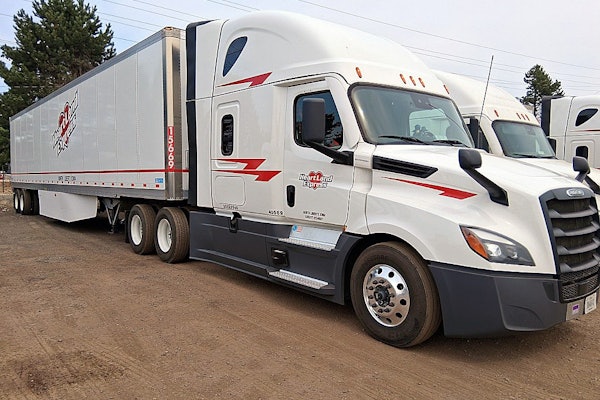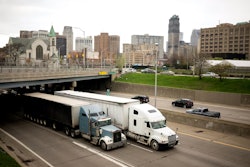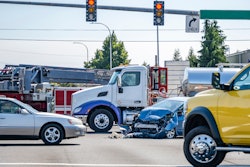The Federal Motor Carrier Safety Administration (FMCSA) on Tuesday issued guidance on how the agency plans to enforce the requirement that commercial drivers speak English – an executive order that also calls for a review of non-domiciled CDLs that are often issued to foreign citizens.
This policy, which is effective immediately, was published the same day that Department of Transportation Secretary Sean Duffy officially ended the Obama-era relaxation of enforcement of English language proficiency (ELP) regulations.
Two-step process
The guidance advises FMCSA personnel to initiate all roadside inspections in English. If the inspector’s initial contact with the driver indicates the driver may not understand the instructions, the inspector is to then conduct an ELP assessment in order to evaluate the driver’s compliance with English language proficiency rule 49 CFR § 391.11(b)(2).
The assessment consists of two parts: a driver interview and a highway traffic sign recognition assessment.
Driver interview
The driver interview, FMCSA said, will establish the driver’s ability to respond to official inquiries "by speaking English sufficiently," FMCSA said, adding inspectors should inform the driver that the driver should respond to the inspector in English. Communication aids such as interpreters, I-Speak cards, cue cards, smart phone applications, and telephone interpretation services are not be used during the driver interview, "as those tools may mask a driver’s inability to communicate in English," the policy reads.
If the inspector determines the driver is unable to respond to official inquiries in English sufficiently, it is the policy of FMCSA that the inspector cite the driver for a violation of 49 CFR § 391.11(b)(2). If the driver fails the interview portion, the inspector is not required to conduct the sign recognition portion assessment.
Sign recognition
FMCSA calls for inspectors to evaluate the driver’s ability to understand sufficiently United States highway traffic signs by conducting a Highway Traffic Sign Assessment to include highway traffic signs that conform to the Federal Highway Administration’s Manual on Uniform Traffic Control Devices for Streets and Highways (MUTCD) and dynamic electronic-display message signs the driver may encounter while operating a commercial motor vehicle.
The inspector is to assess that the driver understands "the meaning of U.S. highway signs."
What's next?
If the inspector cites a driver for a violation of 49 CFR § 391.11(b)(2), the inspector is required to document all evidence that supports the violation, including the driver’s responses or lack thereof.
"It is the policy of FMCSA that the inspector also take follow-on action, including placing the driver immediately out-of-service once a violation of 49 CFR § 391.11(b)(2) is incorporated into the North American Standard Out-of-Service Criteria and, when warranted, initiating an action to disqualify the driver from operating commercial motor vehicles in interstate commerce."
Commercial Vehicle Safety Alliance (CVSA) this month added ELP non-compliance to its North American Standard Out-of-Service Criteria, effective June 25.
"Should the driver be placed out-of-service, the inspector should advise the driver that it is unlawful to operate a commercial motor vehicle while out-of-service and that the driver should not operate commercial motor vehicles in interstate commerce until the condition is remedied," FMCSA wrote in its guidance. "If the inspector determines that the driver is in compliance with the regulation’s requirements to have the ability to respond to official inquiries and to understand highway traffic signs and signals, the inspector may elect to conduct the remainder of the inspection using the communication methods and techniques best suited to facilitate the safe and effective completion of the inspection."
When performing inspections of drivers operating commercial motor vehicles in the border commercial zones along the U.S.-Mexico border, FMCSA advises that enforcement personnel should cite drivers for violations of 49 CFR § 391.11(b)(2) in accordance with its policy, "but should not take follow-on actions of placing the driver out-of-service or initiating an action to disqualify the driver."
Exemptions
Drivers who are hearing impaired and have obtained an exemption from the hearing standard in 49 CFR § 391.41(b)(11), will not be deemed unqualified and placed out-of-service under 49 CFR § 391.11(b)(2) if they are unable to communicate orally in English, FMCSA assured.














